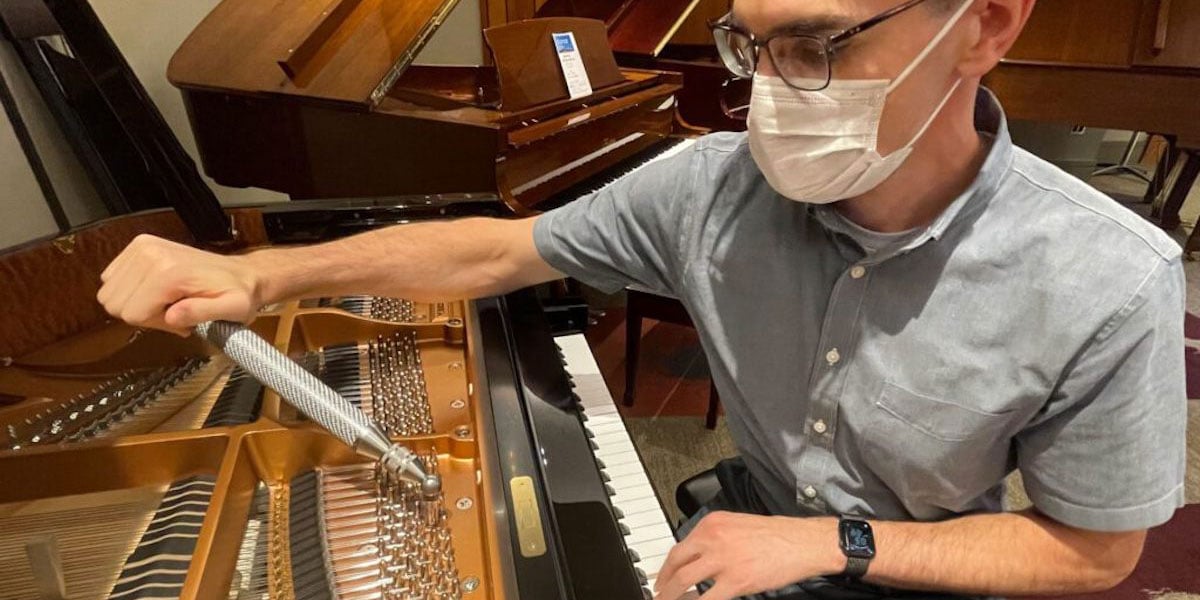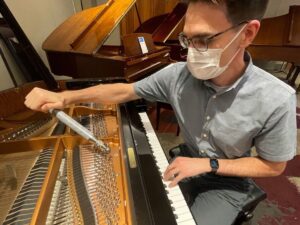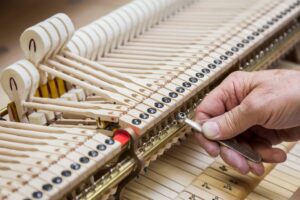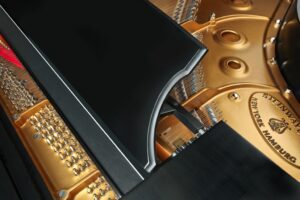Is longterm piano maintenance worth it?
August 17, 2022 •Stephen Reed

Longterm piano maintenance may seem like one of those topics that get everyone nodding in agreement--but with many forgetting its importance beyond regular tunings. However, with an investment as significant as a quality grand or upright, understanding the different forms of maintenance is essential.
After all, what could be worse than spending many thousands of dollars on a quality musical instrument, only to have serious problems later because inexpensive longterm maintenance practices weren’t followed?
In this article, we will review the main forms of longterm piano maintenance and their importance to the overall condition of the piano. You’ll learn that such maintenance goes well beyond regular tunings.
Piano tunings: The most basic form of longterm maintenance

The one piano maintenance question everyone knows is: So how long should I have my piano tuned? Generally, a piano should have a tuning twice per year.
However, you may well need to tune your piano more frequently due to greater humidity in your area, especially as it gets older. But for the vast majority of pianos, a tuning about every 180 days will take into account changes in weather.
The one other exception to this two tunings-per-year rule is a new piano. In its first year, a new piano should be tuned up to four times to help it settle and to stretch the strings. Pianos tuned four times in the first year generally hold tune better going forward.
Risks of not tuning your piano
Jonathan Kotulski, a piano technician for M. Steinert & Sons notes that there are serious risks of not getting your piano tuned.
“If you go many years without tuning the piano, besides being musically useless, the piano may go flat a little bit each year making the tuning worse and worse,” says Jonathan. “When it comes time to get the piano tuned, a pitch raise will have to be performed, to get the piano roughly back to standard pitch, then followed by a fine tuning.”
Humidity control
When it comes to pianos, humidity is important to consider year-round. Pianos don’t like extremes. Pianos do better when temperatures are moderate, neither too hot nor too cold. A piano’s wood responds to its environment and does well when humidity is stabilized.
Otherwise, moisture in the air can be absorbed by the piano’s action, causing the wood in the action to expand and contract. Additionally, the felts in the action can harden, tuning pins can loosen, and even the steel strings can start to rust.
A lack of moisture in the wintertime has its own problems, like the possibility of a dry soundboard cracking. Moisture can dry up when the piano owner turns on heaters in the home. As a result, the smart piano owner will not place their piano near heating vents, fireplaces, radiators, drafty windows, and direct sunlight.
What is the result of all these changes due to unstable humidity? Tuning can become unstable, and what a longterm problem that can be for a musical instrument for which you paid many thousands of dollars.
As a result, a further, smaller investment in your piano in the form of a humidity control system is well worth it. Such a system protects your investment by extending the life of the piano and helping it to hold tune. Such a control system can help keep the piano’s environment to the ideal of 40-45% humidity year-round, with as little fluctuation as possible.
Using a humidity monitor to monitor the levels in the piano room can be helpful. Our piano technicians at M. Steinert & Sons can give you more information about selecting the right kind of humidifier for your piano. They can offer custom recommendations for the customer's specific piano room and climate situation.
Regulation: The piano’s action

In order for a piano’s action to play well, 37 adjustments per key within the piano’s action are needed. Over time, all of this activity for the entire 88 keyboard can make the piano’s touch feel differently after a lot of playing, expansion, and contraction of action parts due to humidity, and loosening of strings.
Regulating your action helps the piano to play again as it did when it was new. This can take the place of individual regulation adjustments or a total action regulation. Such regulation of your piano’s action can extend the length of your piano’s life and keep it enjoyable to play.
Other specific benefits of regulation include evenness/consistency/uniformity of the experience of touch at the keyboard, increased power and tactile control of the tone, increased dynamic range (quieter quiet dynamics and louder loud dynamics), and increased speed of repetition at all dynamic (volume) levels. Finally, regulation can also be customized to the touch preferences of high-level pianists.
Voicing
Some piano action’s felt hammers can harden over time. The repeated contact with the strings causes the felt to become compressed, with grooves created from contact with the string. The result can be a bright, even harsh tone. The piano can even lose its ability to play softly.
However, the leading issue that voicing addresses is when there are notes that do not fit in with the overall tonal character of the instrument. Bringing out the character of the piano and getting this evenness and consistency across the scale is part of the aim of voicing.
Enter the procedure called “voicing.” Voicing corrects the tension of the hammers’ felt, which should be of good quality. The piano technician uses needles to reduce the bright tone by making the felt less hard.
A greater range of musical expression occurs with this kind of longterm maintenance.
Protecting your piano’s finish

While most longterm piano maintenance deals with the inner workings of the piano, protecting your piano’s finish is important–and not just for keeping it looking good as the centerpiece in your home’s parlor or living room.
Like the piano’s action, its wooden case can expand and contract with changes in humidity. This, in turn, can lead to cracks in the finish as well as its overall stability.
Obviously, to avoid scratches or other damage to your piano’s finish, avoid putting objects on your piano, especially drinks. Additionally, common furniture polish should not be used on a piano’s finish. The action of a piano can be damaged if any aerosol cleaning spray gets into it.
Thankfully, a polyester finish is being increasingly used on new pianos. It protects pianos better than the finish on older models.
Choose a thorough piano technician
A good piano technician will be on the lookout for other issues when they are giving a regular tuning. This is not to rack up problems that create more business for them. This is part of their role as a professional wanting your piano to have a long and healthy life.
When a piano owner comes to understand more about their piano, they will typically take better longterm care for their instrument. A good piano technician will have customers who want to keep their piano in excellent condition–first for the joy of playing a quality instrument and second to protect their investment.
At M. Steinert & Sons, we have two full-time piano technicians in Jonathan Kotulski and Zack Brines, both of whom are experienced in examining a wide range of grand and upright pianos. If you have need of any of the longterm maintenance issues addressed in this article or have other questions of your own, don't hesitate to contact us.
Featured Articles
Categories
- Beginner Pianos (17)
- Boston Pianos (12)
- Comparisons (26)
- Designer and Specialty Pianos (8)
- Essex Pianos (10)
- Events (11)
- Featured (22)
- Institutional (3)
- Joy of Piano (14)
- Learning About Pianos (62)
- News (34)
- Pricing and Cost (19)
- Resource Center (117)
- Roland Pianos (6)
- Spirio (14)
- Steinway Pianos (67)
- Student (14)
- Teacher (12)
- Used Pianos (20)
- Videos (17)

